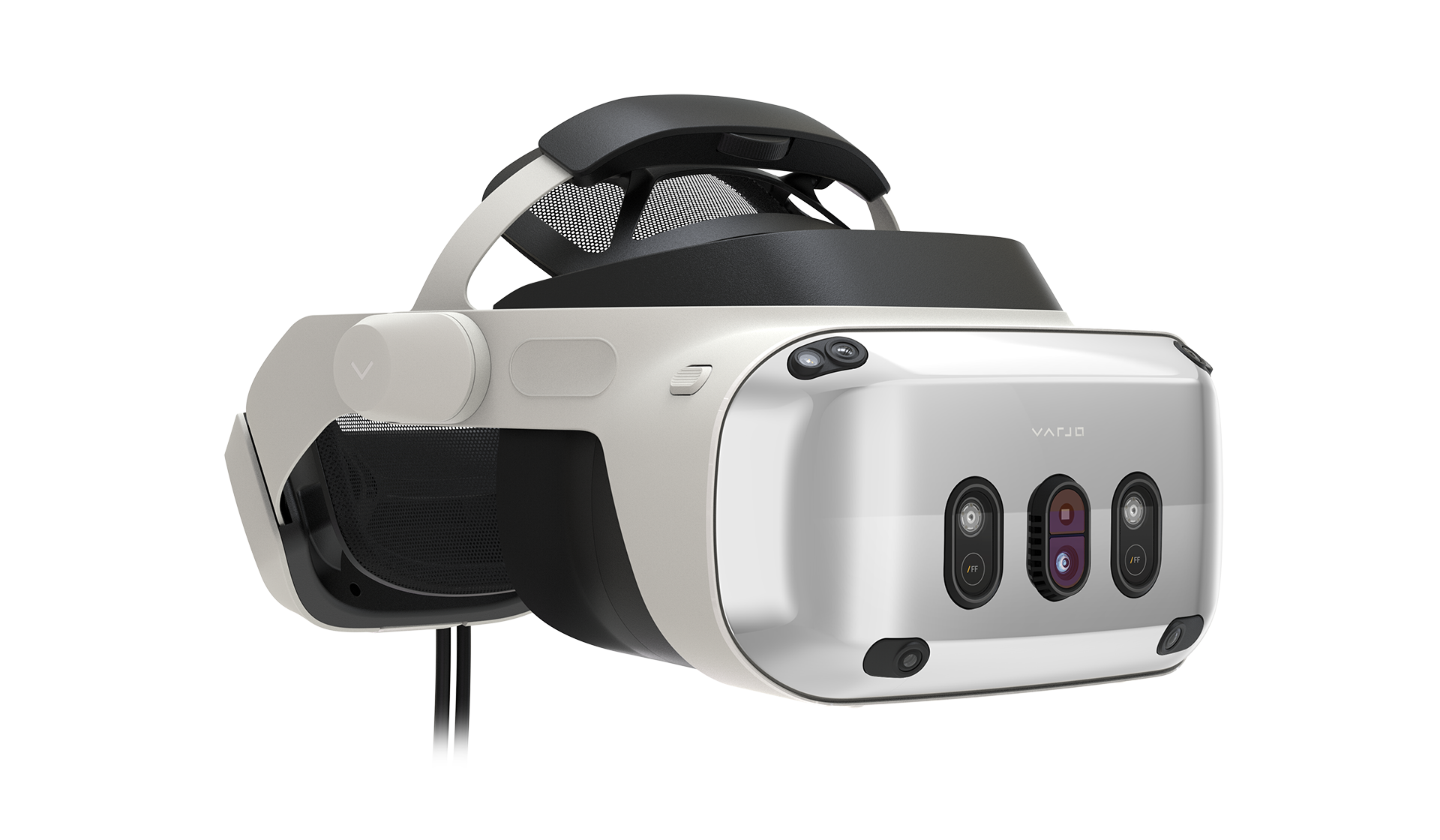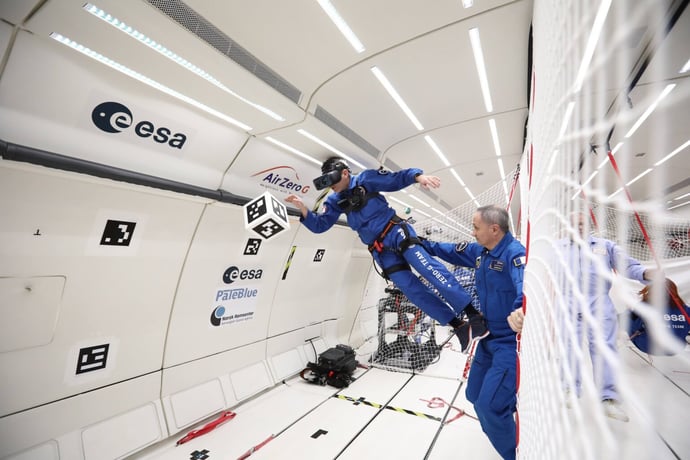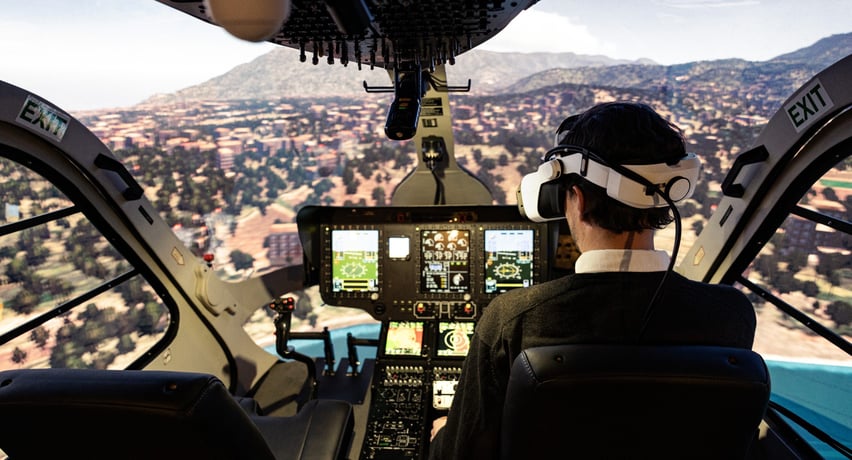One Giant Leap for Training
Recognizing these limitations, ESA is developing headset-based VR/XR simulations designed specifically to complement existing training methods, such as the Neutral Buoyancy pool. Using virtual and mixed reality, astronauts can experience genuine weightlessness, practice precise movements repeatedly, and visualize complex environments more effectively than with traditional methods.
By introducing a new kind of training thanks to flexible and readily accessible virtual environments, astronauts can relieve their intense scheduling pressures during ground preparation, as their training days on Earth are often long and demanding.
“Given these complexities, having the opportunity to supplement physical training with virtual reality simulations is extremely beneficial. VR provides an additional layer of practice, allowing astronauts to refine their procedures even further,” says Andreas Treuer, Haptics & XR Engineer at the European Space Agency.
Additionally, VR/XR can simulate scenarios that are virtually impossible or impractical to recreate through traditional methods. For example, the moment astronauts first open the airlock and see Earth directly beneath them, with only empty space in between: this experience can be overwhelming during their first spacewalk, but by experiencing the scenario in virtual reality beforehand, astronauts become familiar with the emotional and sensory intensity, something that simply can’t be adequately replicated in underwater simulations.









